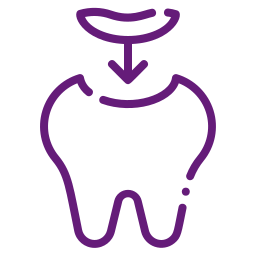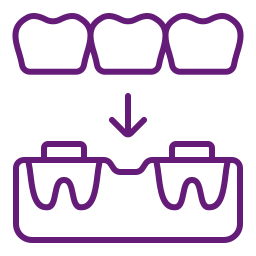Dental Implants
Introduction to Dental Implants In Kharadi
What Are Dental Implants?
Dental implants are artificial tooth roots made of biocompatible materials, such as titanium, that are surgically placed into the jawbone. They serve as a base for fixed or removable replacement teeth, offering durability, stability, and a natural appearance. Over time, the implant fuses with the bone through a process called osseointegration, ensuring a strong and permanent solution for tooth loss.

Talk to our Specialist
Types of Dental Implants
- Endosteal Implants: The most common type, placed directly into the jawbone and used to support crowns, bridges, or dentures.
- Subperiosteal Implants: Positioned on top of the jawbone but beneath the gum tissue, suitable for patients with insufficient bone height.
- Zygomatic Implants: A specialized type used for patients with severe bone loss, anchored in the cheekbone instead of the jawbone.
- All-on-4 Implants: A full-arch solution using only four implants to support an entire row of teeth.
Why Choose Dental Implants?
– Long-lasting solution: With proper care, dental implants can last a lifetime.
– Improved functionality: They restore full chewing ability, allowing you to eat comfortably.
– Natural appearance: Implants look and feel like natural teeth.
– Jawbone preservation: Prevents bone loss and maintains facial structure.
– Enhanced speech: Unlike dentures, implants do not slip or cause speech difficulties.
Symptoms Indicating the Need for Dental Implants
– Difficulty chewing or biting food
– Jawbone deterioration due to tooth loss
– Loose or uncomfortable dentures
– Speech problems caused by gaps in teeth
Risks of Dental Implants
– Nerve damage: Rare cases where nerves may be affected, causing pain or numbness.
– Implant failure: If the bone does not integrate properly, the implant may become loose.
– Sinus problems: Upper jaw implants may interfere with the sinus cavity in some cases.
Procedure for Dental Implants
- Consultation & Evaluation: The dentist assesses your oral health, bone density, and suitability for implants.
- Implant Placement: A titanium post is surgically inserted into the jawbone.
- Healing & Osseointegration: The implant fuses with the bone over several months.
- Abutment Placement: A small connector is attached to the implant.
- Crown or Prosthetic Placement: A custom-made artificial tooth is securely fixed onto the implant.









